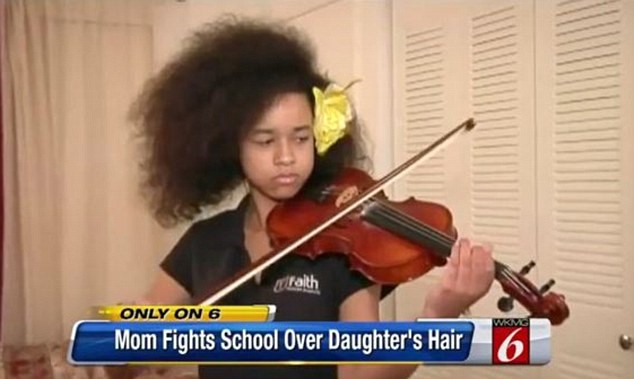Natural Hair and Education Discrimination: Should Schools Ban Natural Hair?

Natural Hair and Education Discrimination Case Study: Vanessa Van Dyke:
In 2013, the Faith Christian Academy, a private school in Orlando, Florida, reprimanded Vanessa Van Dyke for natural hair. A school administrator asserted that Vanessa’s natural hair violated the grooming policy. There were also allegations that Vanessa’s natural hair distracted other students.
There are various types of human hair textures: straight, curly, or kinky. Although there are variations, hair texture is generally a genetic marker that distinguishes racial groups. For example, typically straight hair is linked to people of European or Asian descent, curly hair is linked to people of Latin or Middle Eastern descent, and kinky hair is linked to people of African descent.
In the African American, African, Caribbean, or Latin American cultures, natural hair means it has not been chemically treated. Natural hair is the unaltered hair texture at birth. Natural hair may be styled as an afro, braids, or dreadlocks.
Vanessa had been threatened with expulsion and asked to cut her natural hair, an afro.
Natural Hair and Education Discrimination:
Public schools (K-12 receiving government funds) are in loco parentis with students – or school administrators have custody of students. School administrators act as parents during school hours or related activities. Accordingly, public schools may enforce a grooming policy. Students have First Amendment constitutional rights including freedom of expression, religion, and association. Unlike public schools, private schools (K-12) are funded by tuition, gifts, and endowments. Private schools are not subject to the same level of restrictions as public schools. Private schools may limit First Amendment constitutional rights such as freedom of expression, religion, or association.
Unfortunately, students may be treated differently based on hair texture. There have been allegations of discrimination based on natural hair, which has a direct nexus to race. A grooming policy should be drafted and enforced in a race neutral manner. A grooming policy may have hairstyle rules, which restrict natural hair. School administrators may assert that any perceived disciplinary action due to natural hair is required pursuant to the grooming policy.
On the other hand, students alleging discrimination may assert that but for natural hair, which is tied to race, school administrators would not have engaged in disciplinary action. Under certain circumstances, students may have federal statutory protection provided in Title VI of the Civil Rights of 1964. Title VI of the Civil Rights of 1964 prohibits discrimination in programs or activities that receive federal financial assistance based on race, color, or national origin. The Equal Protection and Due Process Clauses in the Fourteenth Amendment guarantee educational opportunities for all children regardless of the protected categories listed above. A grooming policy might be unconstitutional if used as a pretext for discrimination.
Vanessa claimed that she suffered adverse treatment and bullying due to her natural hair.
Conclusion:
To answer the question asked, should schools ban natural hair? It depends on the circumstances of the case. Schools should not ban natural hair unless doing so is necessary to protect the rights of other students or promote public health and safety.
After protest from Vanessa’s family and national controversy, she was permitted to remain enrolled at the Faith Christian Academy. Vanessa has been encouraged, however, to cut her natural hair to avoid recurring conflict.







